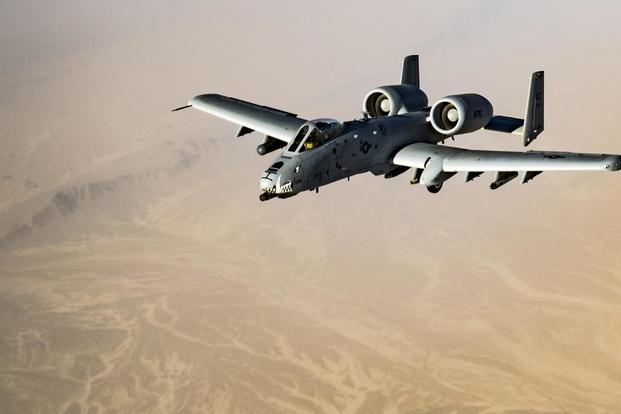The Air Force may be backtracking from its stated plan to keep the A-10 Thunderbolt II flying until 2030.
During a House Armed Services Tactical Air and Land subcommittee hearing on Thursday, Lt. Gen. Jerry D. Harris, the service's deputy chief of staff for strategic plans and requirements, said as a platform, the A-10, beloved among ground troops and attack pilots alike, will remain until roughly that time period.
But even as the "Warthog" got funding for brand-new wings in the $1.3 trillion omnibus budget, that doesn't necessarily mean every one of them will be flying until 2030, Harris said.
"We will have to get back to you on the groundings per year, per airplanes," Harris said in response to Rep. Martha McSally, a Republican from Arizona and former Air Force A-10 pilot.
Related content:
- A-10 Vs. F-35 Showdown Still Coming -- And Could Happen This Spring
- Air Force Searching for New Company to Re-Wing A-10s
- New Wings for A-10 May Keep it Flying Past 2030: Air Force Secretary
"We are not confident we are flying all of the airplanes we currently possess through 2025," Harris said.
In their written testimony, both Lt. Gen. Arnold Bunch, the Air Force's military deputy for the Office of the Assistant Secretary for Acquisition at the Pentagon, and Harris said, "The new wing program will aim to avoid any further groundings beyond 2025 and will ensure a minimum of six combat squadrons remain in service until 2032. In addition to re-winging efforts, the Air Force is exploring ways to augment the A-10 fleet."
The Air Force in January said it began searching for a new company to rebuild wings on the A-10 after ending an arrangement with Boeing Co.
The following month, it released a request draft for proposal for companies to start envisioning their petitions to re-wing the 109 remaining aircraft in the inventory which need the upgrades.
Air Force officials have said the service can commit to maintaining wings for six of its nine A-10 combat squadrons through roughly 2030.
McSally said she understood the A-10's need is based on operational tempo, but pressed officials on what Congress needs to do in order for the Air Force to "smooth out" A-10 retirement issues and re-winging efforts past 2025.
Even if the A-10s don't fly, Harris said the service will preserve portions of the A-10 as it rotates some into backup inventory, or BAI, status. Harris did not elaborate how many A-10s that could apply to.
"We're not going to make a further commitment [on additional wingsets] until we know where we're going with both the A-10 and the F-35," Harris said, referring to the further Initial Operational Test and Evaluation (IOT&E) testing between the two aircraft.
A "fly-off" between the two, part of the IOT&E testing, is expected in the near future.
The requirement that the two aircraft go up against each other was included as a provision in the National Defense Authorization Act for 2017 amid congressional concerns over plans to retire the A-10 and replace it with the F-35. McSally was one of the architects of the bill's language.
"As we are looking at our [combat Air Force] roadmap and where we're going with our modification program, our intent is not to have a grounding that impacts the fleet," Harris said Thursday. "We'll make sure we re-wing enough of the aircraft to have that capability and capacity."
McSally said the need was for nine full squadrons -- not the six the Air Force has suggested.
"With them being south of the DMZ, deployed to Afghanistan, just coming back from schwacking ISIS, and working with our NATO allies and all that we have on our plate, three active-duty and six Guard and Reserve squadrons for a total of nine, that's already stretching it," she said.
"How can we provide that capability to the combatant commanders with only six? I just don't see it," she said.
--Oriana Pawlyk can be reached at oriana.pawlyk@military.com. Follow her on Twitter at @oriana0214.










